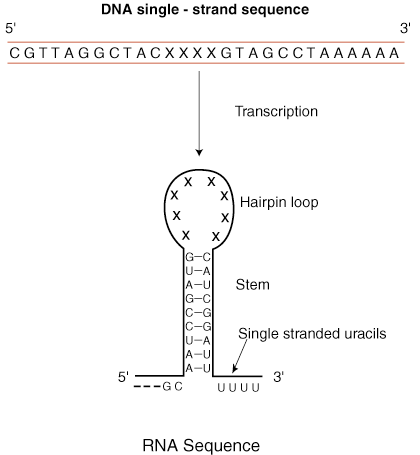Please wait while we process your payment
If you don't see it, please check your spam folder. Sometimes it can end up there.
If you don't see it, please check your spam folder. Sometimes it can end up there.
Please wait while we process your payment

By signing up you agree to our terms and privacy policy.
Don’t have an account? Subscribe now
Create Your Account
Sign up for your FREE 7-day trial
By signing up you agree to our terms and privacy policy.
Already have an account? Log in
Your Email
Choose Your Plan
Individual
Group Discount
Save over 50% with a SparkNotes PLUS Annual Plan!
 payment page
payment page
Purchasing SparkNotes PLUS for a group?
Get Annual Plans at a discount when you buy 2 or more!
Price
$24.99 $18.74 /subscription + tax
Subtotal $37.48 + tax
Save 25% on 2-49 accounts
Save 30% on 50-99 accounts
Want 100 or more? Contact us for a customized plan.
 payment page
payment page
Your Plan
Payment Details
Payment Summary
SparkNotes Plus
You'll be billed after your free trial ends.
7-Day Free Trial
Not Applicable
Renews July 10, 2025 July 3, 2025
Discounts (applied to next billing)
DUE NOW
US $0.00
SNPLUSROCKS20 | 20% Discount
This is not a valid promo code.
Discount Code (one code per order)
SparkNotes PLUS Annual Plan - Group Discount
Qty: 00
SparkNotes Plus subscription is $4.99/month or $24.99/year as selected above. The free trial period is the first 7 days of your subscription. TO CANCEL YOUR SUBSCRIPTION AND AVOID BEING CHARGED, YOU MUST CANCEL BEFORE THE END OF THE FREE TRIAL PERIOD. You may cancel your subscription on your Subscription and Billing page or contact Customer Support at custserv@bn.com. Your subscription will continue automatically once the free trial period is over. Free trial is available to new customers only.
Choose Your Plan
This site is protected by reCAPTCHA and the Google Privacy Policy and Terms of Service apply.
For the next 7 days, you'll have access to awesome PLUS stuff like AP English test prep, No Fear Shakespeare translations and audio, a note-taking tool, personalized dashboard, & much more!
You’ve successfully purchased a group discount. Your group members can use the joining link below to redeem their group membership. You'll also receive an email with the link.
Members will be prompted to log in or create an account to redeem their group membership.
Thanks for creating a SparkNotes account! Continue to start your free trial.
We're sorry, we could not create your account. SparkNotes PLUS is not available in your country. See what countries we’re in.
There was an error creating your account. Please check your payment details and try again.
Please wait while we process your payment

Your PLUS subscription has expired
Please wait while we process your payment
Please wait while we process your payment

Prokaryotic DNA Transcription Elongation and Termination
The elongation phase of transcription refers to the process through which nucleotides are added to the growing RNA chain. As the RNA polymerase moves down the DNA template strand, the open complex bubble moves also. The bubble is of a fixed number of nucleotides, meaning that at the leading end of the bubble the DNA helix is being unwound, while at its trailing end the single strands are being rejoined. Whereas separation of the DNA helix is permanent in replication, it is only temporary in transcription. depicts the beginning steps in transcription up to elongation and the relative positions of the bubble and the polymerase holoenzyme.

As the figure shows, within the open complex bubble the DNA and RNA form a hybrid or joint complex. The exact length of this region is unknown, but it is thought to be between 3 and 12 base pairs long and is found at the growing 3' end of the RNA. The figure also illustrates how the 5' tail end of the RNA chain is separate from, as opposed to base paired to, the DNA template strand. This is another difference between DNA replication and DNA transcription; in replication, the newly synthesized DNA strand remains bound in a helix to the strand with which it has base paired. After the initial stretch of approximately 8 base pairs has been synthesized, the sigma unit, which is responsible for recognition and binding to the promoter region, is released. The core enzyme is left to polymerize the growing RNA chain alone. This leads to the continuous extrusion of the 5' end of the RNA from the enzyme complex. At normal room temperature, the rate of transcription in prokaryotes is 40 nucleotides per second.
RNA synthesis will continue along the DNA template strand until the polymerase encounters a signal that tells it to stop, or terminate, transcription. In prokaryotes, this signal can take two forms, rho-independent and rho-dependent.
The rho-independent terminator is the more simple of the two systems and as a result is also called simple termination. The rho-independent signal is found on the DNA template strand and consists of a region that contains a section that is then repeated a few base pairs away in the inverted sequence.

As is shown in the figure, the patch is followed by a short string of adenines. When this stretch is transcribed into an RNA sequence, the RNA can fold back and base pair with itself forming a hairpin loop.
As you can see, the string of adenines in the DNA sequence are transcribed into uracils in the RNA sequence. Because the uracil bases will only pair weakly with the adenines, the RNA chain can easily be released from the DNA template, terminating transcription.
Please wait while we process your payment

